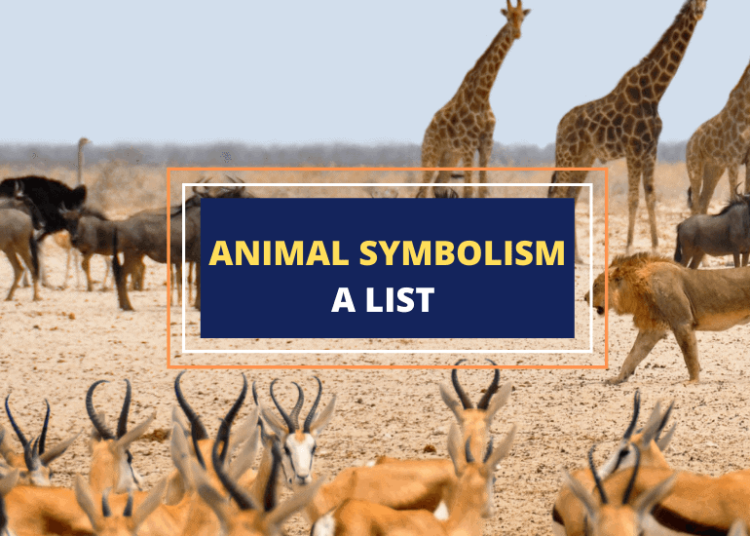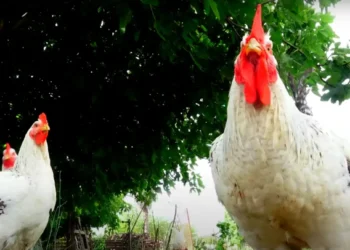Animals that Symbolize Strength and Power
Introduction
When we think of animals that symbolize strength and power, the first ones that come to mind are typically lions, tigers, elephants, bears, and gorillas. These animals have long been associated with physical prowess, dominance, and resilience. However, there are many other creatures that possess impressive strength and abilities, such as ants and bees working together in colonies or extinct species like the woolly mammoth.
The Role of Physical Strength in Animal Kingdom
Physical strength is a crucial factor in the animal kingdom for survival and reproduction. Stronger animals have an advantage when it comes to hunting prey or defending themselves against predators. They also have a better chance of attracting mates and passing on their genes to future generations.
However, physical strength is not the only measure of power in the animal kingdom. Other traits such as intelligence, adaptability, and social skills can also play a significant role in determining an animal’s place in its ecosystem.
The Representation of Strength in Popular Culture Through Lions and Tigers
Lions: The King of the Jungle
Lions are often depicted as the ultimate symbol of strength and power in popular culture. They are known for their majestic appearance with their thick mane around their necks. In African cultures, they are seen as symbols of courage and leadership.
In movies like The Lion King or documentaries about wildlife on television channels like National Geographic or Discovery Channel feature lions prominently due to their status as apex predators.
Tigers: Ferocious yet Beautiful Creatures
Tigers are another popular representation of strength due to their impressive size (the largest among all big cats) combined with striking beauty. Their orange fur with black stripes has become an iconic image throughout history.
Tigers have been used as symbols of strength in many cultures, including Chinese mythology, where they are seen as protectors and guardians. In modern times, tigers have become an endangered species due to habitat loss and poaching.
Why Elephants are Seen as a Symbol of Strength and Resilience
The Physical Attributes of Elephants
Elephants are the largest land animals on Earth, known for their sheer size and strength. They can weigh up to 14,000 pounds and stand over 10 feet tall at the shoulder. Their trunks can lift heavy objects and even tear down trees.
Their massive bodies make them almost invulnerable to predators which is why they are often seen as symbols of resilience. Despite their size, elephants are also intelligent creatures that form strong social bonds with their herd members.
Cultural Significance of Elephants
In many cultures around the world, elephants hold significant cultural importance. For example, in Hinduism, Lord Ganesha is depicted with an elephant head symbolizing wisdom and intelligence. In Thailand, white elephants were once considered sacred animals reserved for royalty only.
In African cultures like the Maasai tribe in Kenya or Tanzania, elephants are revered as symbols of power and strength. The Maasai people believe that elephants possess supernatural powers that can bring good fortune to those who respect them.
Other Characteristics That Make Bears and Gorillas Powerful Symbols
Bears: Power Through Hibernation
Bears may not be the largest or fastest animals in the animal kingdom but they possess incredible physical strength. They have sharp claws that can tear through flesh easily and powerful jaws capable of crushing bones.
Bears also exhibit impressive resilience by hibernating during winter months when food is scarce. During hibernation, bears slow down their metabolism to conserve energy until spring arrives when they emerge from their dens.
Gorillas: Strength in Numbers
Gorillas are the largest primates on Earth and possess incredible physical strength. They have a muscular build with powerful arms capable of lifting heavy objects. Gorillas also form strong social bonds with their troop members, making them a formidable force against predators.
Gorillas exhibit impressive intelligence and problem-solving abilities, as seen in their use of tools like sticks to measure water depth or crack open nuts. Their ability to work together in groups makes them a symbol of collective power.
Cultural Variations in the Interpretation of Animals Representing Strength
Chinese Zodiac Significance
In Chinese culture, each year is associated with an animal from the Chinese zodiac, which represents different personality traits and characteristics. For example, the dragon is associated with power while the rat represents intelligence.
The ox is another animal that symbolizes strength and hard work in Chinese culture due to its association with agriculture and farming. People born under the sign of the ox are believed to possess qualities such as determination, stability, and perseverance.
Native American Animal Totems
Native American tribes have long believed in animal spirits that guide and protect them throughout their lives. These animal spirits are often depicted as symbols of strength and power.
For example, the eagle is considered a powerful symbol of freedom and courage among many Native American tribes. The buffalo is another important animal spirit that represents strength, endurance, and resilience.
Small but Mighty: Ants and Bees as Symbols of Collective Power
The Power of Colony Life
Ants and bees may be small individually but they exhibit incredible collective power through their colony life. They work together to build intricate nests or hives, gather food for their queen or colony members, and defend against predators.
Their ability to work together in large groups makes them a symbol of collective power and strength. Ants and bees also exhibit impressive intelligence and problem-solving abilities, as seen in their ability to navigate complex environments or communicate with each other through pheromones.
The Importance of Pollination
Bees are also important pollinators that play a crucial role in maintaining the balance of ecosystems. Without bees, many plants would not be able to reproduce, which would have a devastating impact on the environment.
Their importance as pollinators has made bees a symbol of environmental resilience and sustainability. Their ability to work together in large groups towards a common goal is an inspiration for human societies working towards similar goals.
Extinct Animals Known for Incredible Physical Strength
Woolly Mammoth: The Ice Age Giant
The woolly mammoth was one of the largest land animals that ever lived, weighing up to 6 tons and standing over 13 feet tall at the shoulder. They were covered in thick fur and had long curved tusks that could grow up to 16 feet long.
Despite their massive size, woolly mammoths were adapted to living in cold environments, which allowed them to survive during the last ice age. Their incredible physical strength made them formidable against predators like saber-toothed cats or cave bears.
Saber-Toothed Tiger: The Ultimate Predator
The saber-toothed tiger was another extinct animal known for its incredible physical strength. They had long curved teeth that could grow up to 7 inches long, which they used to kill prey or defend themselves against predators.
Saber-toothed tigers were apex predators during the Pleistocene epoch, hunting large herbivores like bison or mammoths. Their powerful jaws and muscular bodies made them one of the most feared predators among prehistoric animals.
The Historical Use of Animal Strength for Work Purposes by Humans
Horses: The Workhorse of Civilization
Horses have been used by humans for thousands of years for transportation, agriculture, and warfare. Their strength and speed made them ideal for pulling plows or carriages, while their loyalty and intelligence made them valuable companions in battle.
The domestication of horses played a significant role in the development of human civilization, allowing people to travel further and faster than ever before. Today, horses are still used for work purposes such as ranching or police work.
Oxen: The Backbone of Farming
Oxen were another animal that played a crucial role in human history. They were used as draft animals for plowing fields or pulling carts loaded with goods. Their incredible strength and endurance made them ideal for hard labor tasks.
In many cultures around the world, oxen are still used today for farming purposes. They are also seen as symbols of hard work and perseverance due to their association with manual labor.
Innate Physical Strength Among Different Animal Species
Cheetahs: The Fastest Land Animals
Cheetahs are known for their incredible speed, capable of running up to 70 miles per hour over short distances. Their slender build and long legs make them one of the most agile predators in the animal kingdom.
Their physical strength is not just limited to speed; cheetahs also possess sharp claws and powerful jaws that allow them to take down prey much larger than themselves. However, they tire quickly due to their high metabolism which makes hunting difficult.
Gorillas: Powerhouses of Strength
As mentioned earlier, gorillas are one of the strongest primates on Earth. They have a muscular build with powerful arms capable of lifting heavy objects. Gorillas can lift up to 4,000 pounds which is ten times their body weight.
Their incredible strength makes them formidable against predators like leopards or crocodiles. However, gorillas are generally peaceful animals that prefer to avoid confrontation unless provoked.
Predator Behavior in the Wild as a Display of Dominance and Strength
Lion Hunting Strategies
Lions are apex predators that use a variety of hunting strategies to take down prey. They often work together in groups called prides, with females doing most of the hunting while males defend the territory.
Lions use their incredible speed and strength to chase down prey before pouncing on them with sharp claws and powerful jaws. Their ability to work together in groups makes them one of the most feared predators in the animal kingdom.
Shark Attacks: The Ultimate Predator
Sharks are another predator known for their incredible physical abilities. They have sharp teeth and powerful jaws that allow them to bite through flesh easily. Sharks also possess an excellent sense of smell and can detect blood from miles away.
Shark attacks on humans are rare but when they do occur, they serve as a reminder of the power and dominance these creatures possess in their natural habitat. Despite their fearsome reputation, sharks play a crucial role in maintaining healthy ocean ecosystems by keeping populations of other marine animals in check.
The Use of Animal Imagery to Represent Military Might or Political Power Throughout History
Roman Eagle: Symbol of Military Might
The Roman eagle was an important symbol of military might during the Roman Empire. It was used as a standard for legions marching into battle, representing the power and dominance of Rome over its enemies.
The Roman eagle was also associated with Jupiter, the king of gods, who was depicted holding an eagle on his scepter. This further reinforced the idea of the eagle as a symbol of power and authority.
Bald Eagle: Symbol of American Freedom
The bald eagle is another important symbol in modern times, representing freedom and democracy. It was chosen as the national bird of the United States due to its association with strength, courage, and independence.
The bald eagle has been used in many official emblems and seals throughout American history, including on coins, flags, and government buildings. Today, it remains an iconic image associated with American patriotism and values.
Modern Technology’s Role in Understanding the Physical Abilities of Animal Species
Biomechanics: Studying Animal Movement
Biomechanics is a field of science that studies how animals move and function. It uses modern technology such as motion capture cameras or force sensors to measure the physical abilities of different animal species.
By studying animal movement, scientists can gain insights into how animals are adapted to their environment or how they evolved over time. This information can be used to develop new technologies or improve existing ones based on biological principles.
Animal Robotics: Learning from Nature
Animal robotics is another field that uses modern technology to study animal behavior and adapt it for human use. By mimicking the movements or abilities of animals such as birds or insects, engineers can develop new robots that are more efficient or versatile than traditional machines.
For example, researchers have developed drones that can fly like birds or robots that can crawl like snakes. These innovations have potential applications in fields such as search and rescue operations or environmental monitoring.
Myths and Legends Surrounding Animals with Immense Strength or Supernatural Powers
The Legend of Hercules
Hercules was a legendary figure in Greek mythology known for his incredible strength and courage. He was said to have performed twelve labors that tested his physical abilities, including slaying the Nemean lion and capturing the Erymanthian boar.
Hercules was also associated with supernatural powers, such as his ability to travel to the underworld or defeat monsters like the Hydra. His legend has inspired countless works of art and literature throughout history.
Dragon Lore
Dragons are another creature that has been featured in myths and legends from around the world. They are often depicted as powerful creatures with immense strength and magical abilities.
In Chinese mythology, dragons were seen as symbols of power and good fortune. In European folklore, dragons were often portrayed as fearsome beasts that terrorized villages and hoarded treasure. Despite their mythical status, dragons continue to capture our imaginations today through movies, books, and video games.
Educating Visitors About Natural Animal Abilities in Zoos and Wildlife Parks
Zoo Education Programs
Zoos play an important role in educating visitors about natural animal abilities by providing opportunities for people to observe animals up close. Many zoos offer education programs that teach visitors about animal behavior, biology, and conservation efforts.
These programs can include guided tours, interactive exhibits, or hands-on activities that allow visitors to learn about animals in a fun and engaging way. By increasing awareness about natural animal abilities, zoos can inspire future generations to appreciate and protect wildlife.
Wildlife Parks: Learning Through Observation
Wildlife parks are another type of attraction that allows visitors to observe animals in
The Lessons We Can Learn from Strong, Resilient Animals in Nature
Adaptability
One of the key traits that strong and resilient animals possess is adaptability. These creatures have evolved over time to be able to survive and thrive in a variety of conditions and environments. Whether it’s the camel’s ability to go without water for long periods of time or the Arctic fox’s thick fur coat that allows it to withstand freezing temperatures, these animals have adapted to their surroundings in order to survive. As humans, we can learn from this by being adaptable in our own lives. We should be open to change and willing to adjust our plans when necessary.
Examples:
- Embrace new technologies and ways of doing things
- Be open-minded about different cultures and viewpoints
- Learn new skills and take on new challenges
Persistence
Another important trait that strong and resilient animals possess is persistence. These creatures don’t give up easily, even in the face of adversity. Take the salmon, for example. Every year, these fish swim upstream against strong currents and obstacles in order to spawn. It’s a difficult journey that takes a lot of energy and determination, but they persist nonetheless. As humans, we can learn from this by not giving up on our goals when faced with obstacles or setbacks.
Examples:
- Keep pushing forward even when things get tough
- Find creative solutions to problems instead of giving up
- Stay focused on your end goal no matter what distractions come your way
Social Connections
Many strong and resilient animals also rely on social connections for survival. From packs of wolves hunting together to elephants caring for their young in herds, these creatures have learned to work together and support each other. As humans, we can learn from this by building strong relationships with others and cultivating a sense of community.
Examples:
- Join clubs or groups that share your interests
- Volunteer in your local community
- Maintain close relationships with family and friends
In conclusion, animals have been known for their strength and resilience in the wild, with some being considered as symbols of power and determination. From lions to bears to eagles, these creatures have inspired humans for centuries and continue to do so today.






